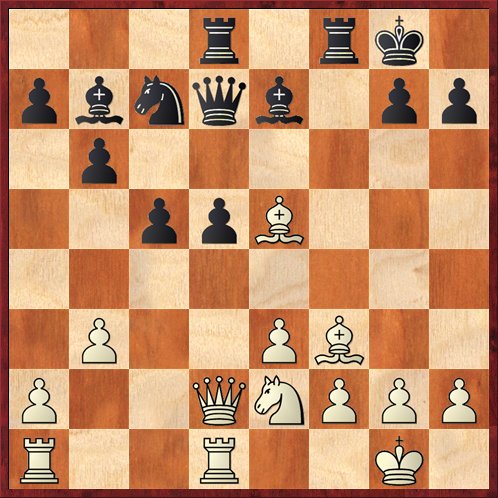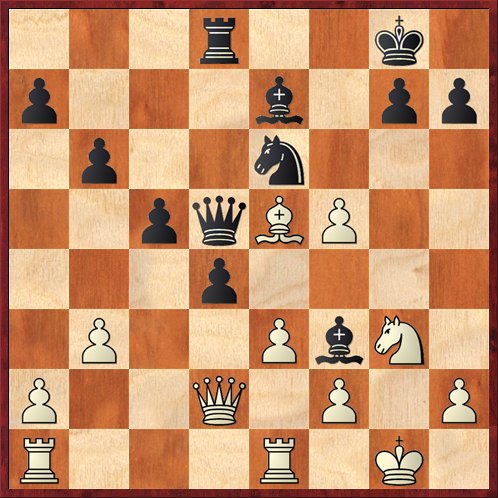A few years ago, Santa Cruz seemed to have more good players hiding in the woodwork than any other city its size. But this week, one of them has come out of hiding in a big way! I refer to James Tarjan, a grandmaster and frequent contender for the U.S. championship in the 1970s who has not played a single tournament game since 1984. He dropped out of chess and for at least the last ten or fifteen years he has been a librarian for the Santa Cruz Public Library. Now, for reasons I do not know, he has entered the U.S. Open in Florida, and when last I checked he was doing pretty well (with a draw in round five against the number one seed).
When Tarjan moved to Santa Cruz the local players made some efforts to contact him and draw him out of retirement, but he wouldn’t budge. He was just a librarian, and all that chess stuff seemed to be in the past. The one thing he did, which I thought was classy, was donate a lot of his old trophies to Gjon Feinstein for him to give away in his scholastic chess tournaments.
Even though I volunteer at the library and run a chess club there, it’s in a different branch, so I’ve never met Tarjan. I think I saw the back of his head one time. I say all of this to make the point that he was really, really out of the game.
There are so many former heroes of the U.S. chess scene who had to quit playing chess in order to have regular careers. Perhaps as they get to retirement age, more of them will come back? That would really be a treat.
I wonder what it’s like to come back to chess after a Rip Van Winkle-esque 30-year absence? I imagine that some of the openings are different. But some things never go out of style. One of them is grinding out wins in bishop versus knight endgames. That’s how Tarjan won in round two. Another is exchange sacrifices, like this one from round three.
 FEN: 3r1rk1/pbnqb1pp/1p6/2ppB3/8/1P2PB2/P2QNPPP/R2R2K1 b – – 0 18
FEN: 3r1rk1/pbnqb1pp/1p6/2ppB3/8/1P2PB2/P2QNPPP/R2R2K1 b – – 0 18
Position after 18. Bxe5. Black to move.
White is a master named Constantine Xanthos, rated 2223. He has just incautiously allowed Tarjan to open the f-file with a pawn trade on e5. Thirty years won’t dull your instincts for finding moves like the next one.
18. … Rxf3!
Of course! I saw this move within two seconds. But there’s a difference between seeing a move and playing it. It’s hard to analyze this sacrifice to a definitive advantage for Black. It comes down to intuition, the sense that White’s kingside is too wrecked and his pieces are too ineffective to defend. Black’s light-squared bishop, especially, is going to be a monster piece. Perhaps it also helps to know your opponent is rated 300 points lower than you, or perhaps that didn’t enter into Tarjan’s calculations at all.
19. gf …
If 19. Bxc7 Qxc7 20. gf I think that 20. … d4 already gives a clear edge to Black. If 21. e4 Bd6 White’s position is riddled with holes and Black’s two bishops are an immense force. White wants to avoid a R+N versus 2B’s position, so he avoids trading bishop for knight. The problem is, though, that the knight is also a great attacker, and a few moves later White ends up trading his bishop for it under much worse circumstances.
19. … Ne6! 20. f4 …
Necessary to defend against Ng5.
20. … d4
The long diagonal opens!
21. Ng3? …
White is desperately trying to keep the diagonal closed with e3-e4. However, I think that 21. Qd3 was a better way to go about it, and after this move I haven’t found a win for Black. White is hoping for 21. … Qd5 22. e4 Qxe4 23. Qxe4 Bxe4 24. Ng3, giving up a pawn but getting queens off the board. I think both sides have chances here.
21. … Bf3!
Great stuff. It looks as if Black is already winning back his material, because if White moves the rook then Black has 22. … Nxf4! followed by … Qh3 followed by mate. However, there are still a few complications.
22. f5! …
Preventing the idea I just mentioned.
22. … Qd5!
I think that 22. … Ng5? right away is not as effective because of 23. h4! It’s a really exciting battle, with thrusts and counterthrusts and lots of pieces hanging. Who will come out ahead?
23. Re1! …
White continues to defend ingeniously! He’s planning to answer 23. … Qxe5 with 24. ed, skewering a whole bunch of pieces on the e-file. Time for another diagram.
 FEN: 3r2k1/p3b1pp/1p2n3/2pqBP2/3p4/1P2PbN1/P2Q1P1P/R3R1K1 b – – 0 23
FEN: 3r2k1/p3b1pp/1p2n3/2pqBP2/3p4/1P2PbN1/P2Q1P1P/R3R1K1 b – – 0 23
Position after 23. Re1. Black to move.
Here I think that Tarjan actually did not choose the most direct route to victory, but I’m not sure whether it was an oversight or a deliberate choice to play a more strategic rather than tactical variation.
23. … d3
I can’t bring myself to give this a question mark because positionally, it’s a dominating move. On the other hand, 23. … Ng5! just seems to be immediately winning. The main idea is 24. ed? Nh3+ 25. Kf1 Bg2+ 26. Ke2 Qf3 mate. On other moves like 24. Bc7 it’s not mate but a winning advantage for Black after 24. … Nh3+ 25. Kf1 Bg2+ 26. Ke2 Qf3+ 27. Kd3 de+ 28. Bxd8 ed+. (I like this line, with two consecutive discovered checks using the same pawn!) Even 24. h4, creating luft, leads to mate after 24. … Nh3+ 25. Kh2 Qxe5 26. Kxh3 Qf6 27. Kh2 Qxh4+ 28. Kg1 Qh3. As far as I can tell, the best White can do after 23. … Ng5 is to out-and-out give up a piece with 24. e4 Qxe5, after which Black is winning in material and position.
24. Bf4 …
White finally prevents … Ng5, but the cost is high.
24. … Nxf4 25. ef Bf6 26. Rac1 h5!
This way of winning is slower but it’s inexorable. The pawn marches to h3 and that, along with the powerful passed pawn on d3, puts White into a bind he can’t get out of. White gave back the exchange with 27. Re3 h4 28. Rxf3 Qxf3 and resigned about ten moves later.
If I were White in this game, I would not be too discouraged. This is a much better way to lose to a grandmaster than the way I usually lose (making stupid mistakes). White played some good moves but ultimately Black’s attack was too strong.
As for Tarjan, now we’ll see how he does against the big boys!
P.S. I noticed something odd about Tarjan’s member page at the USCF website. Although he hasn’t played a rated game since 1984, his rating has changed. In the January 1990 supplement it was listed as 2609, but in 2004 it suddenly dropped to 2557, which is the rating he is playing under in this tournament. Does anyone know how and why he lost 50 rating points without even playing a game? I would be pretty annoyed if that happened to me!



{ 5 comments… read them below or add one }
Thanks so much for the update on James Tarjan. Back in the early 1980’s I saw him in Palo Alto give a lecture on his win against (I believe) Lajos Portisch….and then James gave a simultaneous. I heard he had become a librarian in Santa Cruz…and dropped off the chess map. Hopefully he’ll get back into chess tournaments on a regular basis. He’s probably shocked at how many tournaments are now offered in the South Bay…..totally different when he was last in action. I also believe before he left chess he was quite active in the Mechanics Institute, but I’m not sure about this. Needless to say, it would be great if you could score an interview with him.
A couple of months ago Tarjan played in a blitz tournament at the Mechanics. Quite exciting to see this famous name from the past.
Tarjan retired recently from his library job–hence the time to play. Why? Only he can say.
It would be very interesting to hear about his sessions with Fischer at the downtown LA library. Tarjan finished the U.S. Open with 7 points. This old lion still has plenty of bite!
Another long-lost Grandmaster who works in the Bay Area is Tal Shaked of Google. The news today is that he is a daddy!